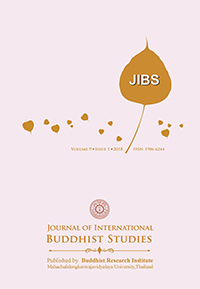Cosmology and Cultural Ecology as Reflected in Borobudur Buddhist Temple
Keywords:
Borobudur, Mahayana Buddhism, cosmology, cultural ecology, scienceAbstract
Advancement in science and technology that has been achieved by human beings does not necessarily imply they are freed from environmental problems. Buddhism since the very beginning has been in harmony with nature; the Buddha was fond of nature; however, it is very little its sources speak about the interconnection between human and environment. The question of the significance of cultural ecology comes into prominent in these days as there has been increasing environmental problems happen. Borobudur Buddhist temple in Central Java contains some ideas or elements that can be used to cope with the problems mentioned. Interestingly, the whole body of the monument was inspired by the teachings of the Buddha and Buddhism in which the Causal Law having impetus in the theory dependent-origination (Pratyasamutpada) is reflected clearly in the reliefs of Mahakarmavibanggain Kamadhatubase level. For a better understanding of this law, the connection with cosmology in Mahayana Buddhism is discussed in brief. It is found that there are various natural elements were depicted and crafted by the artists in a high standard of art as the manifestations of the Buddha’s teachings. Amongst the natural elements depicted here, tree, plant, or forest are dominant elements, which appear almost in all reliefs either in the main walls or balustrade. The relatedness amongst the elements is shown beautifully in complex relationship amongst them, and this has moral, aesthetical, spiritual, and ecological messages that need to be known for spiritual as cendance. When the interaction amongst them should be accomplished it is required an ethical principle as how to maintain harmony with those natural elements, animals and human beings for a better world order and happy life.
References
Soekmono, et.al. Borobudur: Prayer in Stone. Paris: Editions Didier Millet, 1990.
Lokesh Candra, “Borobudur is the Base of an Architectonic Vajradhatu-Mandala” in Cultural Horizons of India, Vol. IV.Delhi: International Academy of Indian Culture and AdityaPrakashan, 1995.
Borobudur: Golden Tales of the Buddhas. Singapore: Periplus, 1994. However, J. Dumarcay mentions 368 Buddha statues See,
Borobudur. Kuala Lumpur: Oxford University Press,1983. Based on pictures in Louis and Frederic’s books Borobudur
New York: Abbeville Press, 1994.







